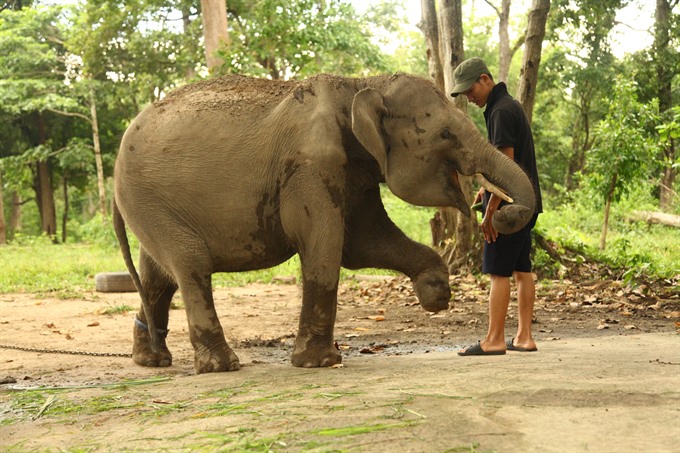Since early human settlement, wild elephants have been an integral part of Viet Nam’s identity. The cultural icon has inspired poetry, music and art.

A 4-years-old baby elephant named Jun, trapped by locals and was wounded at his trunk and nails. He is permanently unable to rehab with his herds and is now protected and nursed by Dak Lak Elephant Conservation Centre.
The Central Highlands hosts 70 per cent of Viet Nam’s wild elephant population. The protection of wild elephants in this location is critical to the survival of the species.
Illegal poaching and trapping are not the only threats to the survival of wild elephants. Human-elephant conflict frequently takes a serious toll. Between 2009 and 2016, Dak Lak province’s wild elephant herd dropped 25 per cent with a loss of 23 individuals. Tragically, 75 per cent of these were babies under one year old.
In Viet Nam, the most substantial herd of wild elephants exist in Central Highlands’s Yok Don National Park. Unfortunately, the population is less than 70 survivors.
Although ivory trade is banned in Viet Nam, the country remains a top market for ivory products, used locally for decorative and medicinal purposes.
Viet Nam outlawed the ivory trade in 1992, but shops near the Old Quarters zone still sell ivory products, and weak law enforcement has allowed its illegal trade to perdure.
A survey last year found more than 16,000 ivory products available in Ha Noi, according to The Convention on International Trade in Endangered Species of Wild Fauna and Flora (CITES).
In Viet Nam, urgent actions to protect wild elephants will be jointly taken by WWF Vietnam and Yok Don National Park, and effective cross-border co-operation between the park and Cambodia in wild elephant conservation will be implemented by 2020.
VNS